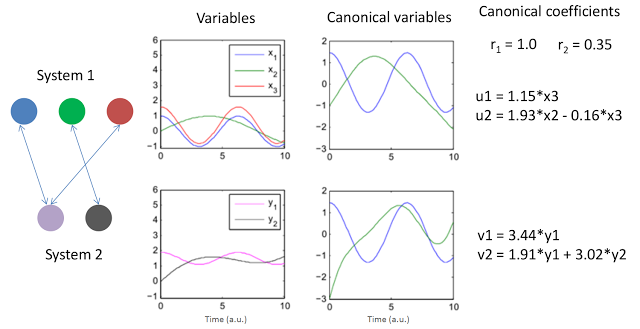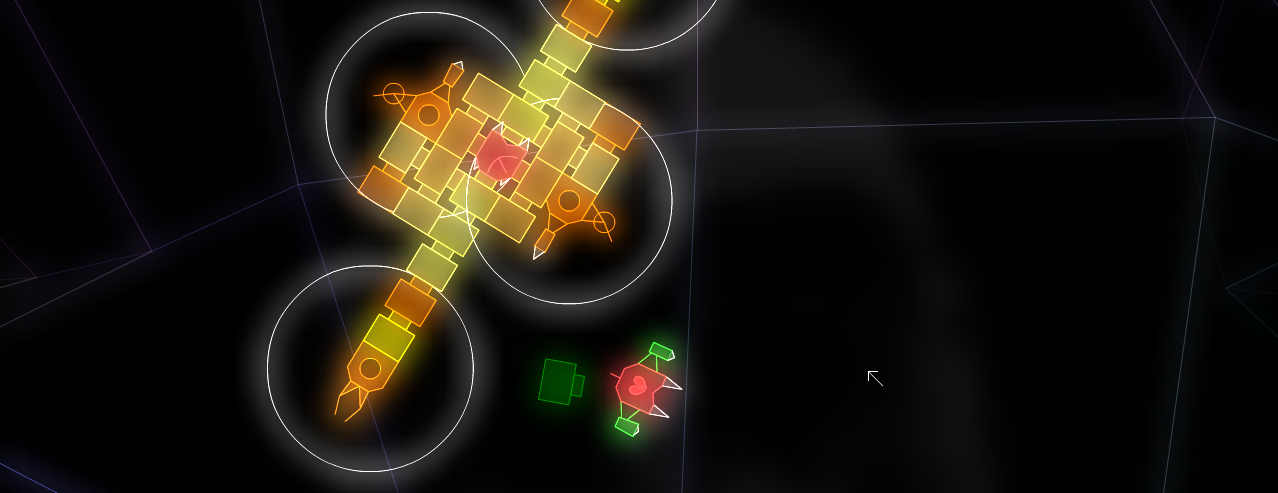Edge; QUANTUM MONKEYS — A Talk with Seth Lloyd: "by applying the physics of computation you find that the universe has performed ten to the one hundred and twenty (10^120) elementary operations (e.g., bit flips) on ten to the ninety (10^90) bits."
"The Big Five factors and their constituent traits can be summarized as follows (see details below):
Openness to Experience - Appreciation for art, emotion, adventure, unusual ideas; imagination and curiosity.
Conscientiousness - A tendency to show self-discipline, act dutifully, and aim for achievement (spontaneousness vs planned behaviour).
Extraversion - Energy, surgency, and the tendency to seek stimulation and the company of others.
Agreeableness - A tendency to be compassionate and cooperative rather than suspicious and antagonistic towards others (individualism vs cooperative solutions).
Neuroticism - A tendency to easily experience unpleasant emotions such as anger, anxiety, depression, or vulnerability (emotional stability to stimuli)."
Big Five personality traits - Wikipedia, the free encyclopedia
Openness to Experience - Appreciation for art, emotion, adventure, unusual ideas; imagination and curiosity.
Conscientiousness - A tendency to show self-discipline, act dutifully, and aim for achievement (spontaneousness vs planned behaviour).
Extraversion - Energy, surgency, and the tendency to seek stimulation and the company of others.
Agreeableness - A tendency to be compassionate and cooperative rather than suspicious and antagonistic towards others (individualism vs cooperative solutions).
Neuroticism - A tendency to easily experience unpleasant emotions such as anger, anxiety, depression, or vulnerability (emotional stability to stimuli)."
Big Five personality traits - Wikipedia, the free encyclopedia
From the DSM-IV
(Diagnostic And Statistical Manual Of Mental Disorders, 4th edition, 1994)
Diagnostic Criteria For 299.80 Asperger's Disorder
A. Qualitative impairment in social interaction, as manifested by at least two of the following:
1. marked impairments in the use of multiple nonverbal behaviors such as eye-to-eye gaze, facial expression, body postures, and gestures to regulate social interaction
2. failure to develop peer relationships appropriate to developmental level
3. a lack of spontaneous seeking to share enjoyment, interests, or achievements with other people (e.g. by a lack of showing, bringing, or pointing out objects of interest to other people)
4. lack of social or emotional reciprocity
B. Restricted repetitive and stereotyped patterns of behavior, interests, and activities, as manifested by at least one of the following:
1. encompassing preoccupation with one or more stereotyped and restricted patterns of interest that is abnormal either in intensity or focus
2. apparently inflexible adherence to specific, nonfunctional routines or rituals
3. stereotyped and repetitive motor mannerisms (e.g., hand or finger flapping or twisting, or complex whole-body movements)
4. persistent preoccupation with parts of objects
C. The disturbance causes clinically significant impairments in social, occupational, or other important areas of functioning
D. There is no clinically significant general delay in language (e.g., single words used by age 2 years, communicative phrases used by age 3 years)
E. There is no clinically significant delay in cognitive development or in the development of age-appropriate self-help skills, adaptive behavior (other than social interaction), and curiosity about the environment in childhood
F. Criteria are not met for another specific Pervasive Developmental Disorder or Schizophrenia
(Diagnostic And Statistical Manual Of Mental Disorders, 4th edition, 1994)
Diagnostic Criteria For 299.80 Asperger's Disorder
A. Qualitative impairment in social interaction, as manifested by at least two of the following:
1. marked impairments in the use of multiple nonverbal behaviors such as eye-to-eye gaze, facial expression, body postures, and gestures to regulate social interaction
2. failure to develop peer relationships appropriate to developmental level
3. a lack of spontaneous seeking to share enjoyment, interests, or achievements with other people (e.g. by a lack of showing, bringing, or pointing out objects of interest to other people)
4. lack of social or emotional reciprocity
B. Restricted repetitive and stereotyped patterns of behavior, interests, and activities, as manifested by at least one of the following:
1. encompassing preoccupation with one or more stereotyped and restricted patterns of interest that is abnormal either in intensity or focus
2. apparently inflexible adherence to specific, nonfunctional routines or rituals
3. stereotyped and repetitive motor mannerisms (e.g., hand or finger flapping or twisting, or complex whole-body movements)
4. persistent preoccupation with parts of objects
C. The disturbance causes clinically significant impairments in social, occupational, or other important areas of functioning
D. There is no clinically significant general delay in language (e.g., single words used by age 2 years, communicative phrases used by age 3 years)
E. There is no clinically significant delay in cognitive development or in the development of age-appropriate self-help skills, adaptive behavior (other than social interaction), and curiosity about the environment in childhood
F. Criteria are not met for another specific Pervasive Developmental Disorder or Schizophrenia
"For over two thousand years, the adjective 'Euclidean' was unnecessary because no other sort of geometry had been conceived. Euclid's axioms seemed so intuitively obvious that any theorem proved from them was deemed true in an absolute sense. Many other consistent formal geometries are now known, the first ones being discovered in the early 19th century. It also is no longer taken for granted that Euclidean geometry describes physical space. An implication of Einstein's theory of general relativity is that Euclidean geometry is only a good approximation to the properties of physical space if the gravitational field is not too strong."
Euclidean geometry - Wikipedia, the free encyclopedia
Euclidean geometry - Wikipedia, the free encyclopedia
ESA - Space Science - Extreme space - How many stars are there in the Universe?: "For the Universe, the galaxies are our small representative volumes, and there are something like 10^11 to 10^12 stars in our galaxy, and there are perhaps something like 10^11 or 10^12 galaxies.
With this simple calculation you get something like 10^22 to 10^24 stars in the Universe. This is only a rough number, as obviously not all galaxies are the same, just like on a beach the depth of sand will not be the same in different places."
With this simple calculation you get something like 10^22 to 10^24 stars in the Universe. This is only a rough number, as obviously not all galaxies are the same, just like on a beach the depth of sand will not be the same in different places."
Psychology Today: The Girl With a Boy's Brain:
"'To me, art is a part of science, of observation - it's finding the details that define an object.'"
"'To me, art is a part of science, of observation - it's finding the details that define an object.'"
ACTUAL ENGLISH SUBTITLES USED IN FILMS MADE IN HONG KONG:
"
1. I am damn unsatisfied to be killed in this way.
2. Fatty, you with your thick face have hurt my instep.
3. Gun wounds again?
4. Same old rules: no eyes, no groin.
5. A normal person wouldn't steal pituitaries.
6. Damn, I'll burn you into a BBQ chicken!
7. Take my advice, or I'll spank you without pants.
8. Who gave you the nerve to get killed here?
9. Quiet or I'll blow your throat up.
10. You always use violence. I should've ordered glutinous rice chicken.
11. I'll fire aimlessly if you don't come out!
12. You daring lousy guy.
13. Beat him out of recognizable shape!
14. I have been scared shitless too much lately.
15. I got knife scars more than the number of your leg's hair!
16. Beware! Your bones are going to be disconnected.
17. The bullets inside are very hot. Why do I feel so cold?
18. How can you use my intestines as a gift?
19. This will be of fine service for you, you bag of the scum. I am sure you will not mind that I remove your manhoods and leave them out on the dessert flour for your aunts to eat. [sic, of course]
20. Yah-hah, evil spider woman! I have captured you by the short rabbits and can now deliver you violently to your gynecologist for a thorough examination.
21. Greetings, large black person. Let us not forget to form a team up together and go into the country to inflict the pain of our karate feets on some ass of the giant lizard person. "
"
1. I am damn unsatisfied to be killed in this way.
2. Fatty, you with your thick face have hurt my instep.
3. Gun wounds again?
4. Same old rules: no eyes, no groin.
5. A normal person wouldn't steal pituitaries.
6. Damn, I'll burn you into a BBQ chicken!
7. Take my advice, or I'll spank you without pants.
8. Who gave you the nerve to get killed here?
9. Quiet or I'll blow your throat up.
10. You always use violence. I should've ordered glutinous rice chicken.
11. I'll fire aimlessly if you don't come out!
12. You daring lousy guy.
13. Beat him out of recognizable shape!
14. I have been scared shitless too much lately.
15. I got knife scars more than the number of your leg's hair!
16. Beware! Your bones are going to be disconnected.
17. The bullets inside are very hot. Why do I feel so cold?
18. How can you use my intestines as a gift?
19. This will be of fine service for you, you bag of the scum. I am sure you will not mind that I remove your manhoods and leave them out on the dessert flour for your aunts to eat. [sic, of course]
20. Yah-hah, evil spider woman! I have captured you by the short rabbits and can now deliver you violently to your gynecologist for a thorough examination.
21. Greetings, large black person. Let us not forget to form a team up together and go into the country to inflict the pain of our karate feets on some ass of the giant lizard person. "
"Eukaryota; Metazoa; Chordata; Craniata; Vertebrata; Euteleostomi; Mammalia; Eutheria; Euarchontoglires; Primates; Haplorrhini; Catarrhini; Hominidae; Homo; Homo sapiens"
From Genome Project
From Genome Project
Centered div:
body {
text-align: center;
}
.maindiv {
width: 800px;
text-align: left;
padding: 20px;
margin:0 auto; /*required for Firefox*/
}
body {
text-align: center;
}
.maindiv {
width: 800px;
text-align: left;
padding: 20px;
margin:0 auto; /*required for Firefox*/
}
McSweeney's Internet Tendency: Jokes Made by Robots, for Robots.: "Jokes
Made by Robots,
for Robots.
BY J. ALEX BOYD
A rabbi, an Arab, a robot, and a Catholic priest walk into a bar. Only the robot exits.
A robot walks into a pharmacy. The pharmacist asks him if he'd like anything. The robot replies, 'A soul.'
How do you stop a robot from destroying you and the rest of civilization?
You don't.
'Waiter! Waiter! What's this robot doing in my soup?'
'It looks like he's performing human tasks twice as well, because he knows no fear or pain.'
Knock knock.
Who's there?
A robot.
Oh, shit.
What's the difference between a regular robot and a killer robot?
The gnawing jeers of men.
What's a robot's favorite cereal?
Rob-os.
(Note: Rob-os are made of the tears of human children.)
Little Susie tosses a clock out the window. A robot inquires, 'Why did you do that?' She replies, 'I wanted to see time fly!' The robot says, 'Ah ... A perfect subject for elimination,' and shoots her with a laser beam through the face.
Why did the robot order a milkshake?
To blend in with the general human population, making it easier to infiltrate society and—in time—conquer it.
Why was six afraid of seven?
Because seven was a robot."
Made by Robots,
for Robots.
BY J. ALEX BOYD
A rabbi, an Arab, a robot, and a Catholic priest walk into a bar. Only the robot exits.
A robot walks into a pharmacy. The pharmacist asks him if he'd like anything. The robot replies, 'A soul.'
How do you stop a robot from destroying you and the rest of civilization?
You don't.
'Waiter! Waiter! What's this robot doing in my soup?'
'It looks like he's performing human tasks twice as well, because he knows no fear or pain.'
Knock knock.
Who's there?
A robot.
Oh, shit.
What's the difference between a regular robot and a killer robot?
The gnawing jeers of men.
What's a robot's favorite cereal?
Rob-os.
(Note: Rob-os are made of the tears of human children.)
Little Susie tosses a clock out the window. A robot inquires, 'Why did you do that?' She replies, 'I wanted to see time fly!' The robot says, 'Ah ... A perfect subject for elimination,' and shoots her with a laser beam through the face.
Why did the robot order a milkshake?
To blend in with the general human population, making it easier to infiltrate society and—in time—conquer it.
Why was six afraid of seven?
Because seven was a robot."
Guardian Unlimited | Science | Selam, the three-year-old from 3.3m years ago:
"The ascent of man
6.5m years ago
Earliest human lineages split from chimpanzees and gorillas, but share many traits with the apes.
5.8m years ago
The oldest human ancestor, Orrorin tugenesis, emerges and is thought to walk on two legs.
4m years ago
Australopithecus arrives with a brain no larger than a chimp's. Makes home on the savannah and develops teeth for chewing tough food.
2.5m years ago
Homo habilis, right, the first modern human genus emerges. It has a brain half the size of humans today and begins to use primitive stone tools.
2m years ago
Homo ergaster arrives with a smaller face and teeth, but slightly larger brain. Develops hand axes and may have begun to harness fire.
1.8m years ago
Homo erectus or Java man, the first true hunter-gatherer settles in Asia.
600,000 years ago
Homo heidelbergensis lives in Africa and Europe. Its brain is similar in size to a modern human's.
230,000 years ago
Neanderthals arrive in Britain and Europe.
195,000 years ago
Homo sapiens appears, but it is a further 45,000 years before the first signs of speech emerge.
95,000 years ago
The diminutive 'Hobbit' people, Homo floresiensis, is believed to emerge in Indonesia."
"The ascent of man
6.5m years ago
Earliest human lineages split from chimpanzees and gorillas, but share many traits with the apes.
5.8m years ago
The oldest human ancestor, Orrorin tugenesis, emerges and is thought to walk on two legs.
4m years ago
Australopithecus arrives with a brain no larger than a chimp's. Makes home on the savannah and develops teeth for chewing tough food.
2.5m years ago
Homo habilis, right, the first modern human genus emerges. It has a brain half the size of humans today and begins to use primitive stone tools.
2m years ago
Homo ergaster arrives with a smaller face and teeth, but slightly larger brain. Develops hand axes and may have begun to harness fire.
1.8m years ago
Homo erectus or Java man, the first true hunter-gatherer settles in Asia.
600,000 years ago
Homo heidelbergensis lives in Africa and Europe. Its brain is similar in size to a modern human's.
230,000 years ago
Neanderthals arrive in Britain and Europe.
195,000 years ago
Homo sapiens appears, but it is a further 45,000 years before the first signs of speech emerge.
95,000 years ago
The diminutive 'Hobbit' people, Homo floresiensis, is believed to emerge in Indonesia."
Evil villain now hiring -- on craigslist (reddit.com): "Date: 2006-09-13, 12:25PM EDT
Currently looking to fill the position of henchmen,and beautiful female accomplice.
Henchmen Must be willing to take orders and be able to work weekends and nights as well. Please note you will be working in a hollow based volcano which is a hazardous environment, so there will be some risks involved. Please attach resume with former henching experience. Experience with lasers a plus, but not needed. Will train the right individual.
Beautiful Female Accomplice Ideal beautiful female accomplice, must be willing to take orders and sit, stand or otherwise be beautiful, essentially you will be an object for me to admire. Some special tasks may also be involved. Martial arts and modeling skills are a plus. You will have a facade that you are truly evil, but inevitably the good inside you will turn you to my arch-nemesis. Please send resume along with pictures to be considered for interview.
Evil Villain is an EOE and will not discriminate.
* Job location is undisclosed active hollow volcano
* Compensation: Healthcare, Matching 401k, Dental, Paid vacations, Holiday Bonuses.
* yes -- OK for recruiters to contact this job poster.
* no -- Please, no phone calls about this job!
* yes -- You may contact job poster about other services, products or commercial interests.
* no -- Reposting this message elsewhere is NOT OK.
* yes -- OK to repost to Job Developers for Persons with Disabilities."
Currently looking to fill the position of henchmen,and beautiful female accomplice.
Henchmen Must be willing to take orders and be able to work weekends and nights as well. Please note you will be working in a hollow based volcano which is a hazardous environment, so there will be some risks involved. Please attach resume with former henching experience. Experience with lasers a plus, but not needed. Will train the right individual.
Beautiful Female Accomplice Ideal beautiful female accomplice, must be willing to take orders and sit, stand or otherwise be beautiful, essentially you will be an object for me to admire. Some special tasks may also be involved. Martial arts and modeling skills are a plus. You will have a facade that you are truly evil, but inevitably the good inside you will turn you to my arch-nemesis. Please send resume along with pictures to be considered for interview.
Evil Villain is an EOE and will not discriminate.
* Job location is undisclosed active hollow volcano
* Compensation: Healthcare, Matching 401k, Dental, Paid vacations, Holiday Bonuses.
* yes -- OK for recruiters to contact this job poster.
* no -- Please, no phone calls about this job!
* yes -- You may contact job poster about other services, products or commercial interests.
* no -- Reposting this message elsewhere is NOT OK.
* yes -- OK to repost to Job Developers for Persons with Disabilities."
I've always ask myself
Do you like songs for the memories it triggers?
or do you like songs because they are good, you like the melody, lyrics, etc?
I've always believe the memories it triggers is the most important.
Do you like songs for the memories it triggers?
or do you like songs because they are good, you like the melody, lyrics, etc?
I've always believe the memories it triggers is the most important.
Eye Strengthening Exercises - Part 1
http://altmedicine.about.com/cs/illnesswellness/a/EyeExercise1.htm
1. Focus your gaze on the tip of your nose without blinking. Remain like this for as long as you can. Then close your eyes and relax.
2. Focus on your "third eye" without blinking. This is the area between the eyebrows above your nose. Then close your eyes and relax.
It may feel uncomfortable or hard to do at first, but do not let yourself become frustrated. Keep your focus on that area and with time, you will find this posture easier to do.
3. Without turning your head, focus both eyes on your left shoulder. Remain like this for as long as you can. Then close your eyes and relax. Repeat this sequence with the right shoulder.
Eye Exercises
http://www.holisticonline.com/yoga/hol_yoga_pos_eyeex.htm
Exercise 1
Move your eyes upwards as far as you can, and then downwards as far as you can. Repeat four more times. Blink quickly a few times 1 to relax the eye muscles.
Exercise 2
Now do the same using points to your right and to your left, at eye level. Keep your raised fingers or two pencils on each side as guides and adjust them so that you can see them clearly when moving the eyes to the right and to the left, but without straining.
Keeping the fingers at eye level, and moving only the eyes, look to the right at your chosen point, then to the left. Repeat four times. Blink several times, then close your eyes and rest.
Exercise 3
Choose a point you can see from the right corner of your eyes when you raise them, and another that you can see from the left corner of your eyes when you lower them, half closing the lids. Remember to retain your original posture: spine erect, hands on knees, head straight and motionless.
Look at your chosen point in right corner up, then to the one in left corner down. Repeat four times. Blink several times. Close the eyes and rest.
Now do the same exercise in reverse. That is, first look to the left corner up, then to the right corner down. Repeat four times. Blink several times. Close the eyes and rest.
Exercise 4
This exercise should not be done until three or four days after you have begun eye exercises given here.
Slowly roll your eyes first clockwise, then counterclockwise as follows: Lower your eyes and look at the floor, then slowly move the eyes to the left, higher and higher until you see the ceiling. Now continue circling to the right, lower and lower down, until you see the floor again. Do this slowly, making a full-vision circle. Blink, close your eyes and rest. Then repeat the same action counterclockwise.
Do this five times then blink the eyes for at least five seconds.
When rolling the eyes, make as large a circle as possible, so that you feet a little strain as you do the exercise. This stretches the eye muscles to the maximum extent, giving better results.
Exercise 5
Next comes a changing-vision exercise. While doing it you alternately shift your vision from close to distant points several times.
Take a pencil, or use your finger, and hold it under the tip of your nose. Then start moving it away, without raising it, until you have fixed it at the closest possible distance where you can see it clearly without any blur. Then raise your eyes a little, look straight into the distance and there find a small point which you can also see very clearly.
Now look at the closer point-the pencil or your finger tip then shift to the farther point in the distance. Repeat several times, blink, close your eyes and squeeze them tight.
Exercise 6
Close your eyes as tightly as you possibly can. Really squeeze the eyes, so the eye muscles contract. Hold this contraction for three seconds, and then let go quickly.
This exercise causes a deep relaxation of the eye muscles, and is especially beneficial after the slight strain caused by the eye exercises. Blink the eyes a few times.
Exercise 7
This exercise is called 'palming' and is very relaxing to the eyes. It is also most important for preserving the eyesight. Palming also has a beneficial, relaxing effect on your nervous system.
It's an ideal way to finish off the eye exercises.
Yoga Exercise - Eye Training
http://www.abc-of-yoga.com/yogapractice/eyeexercises.asp
http://altmedicine.about.com/cs/illnesswellness/a/EyeExercise1.htm
1. Focus your gaze on the tip of your nose without blinking. Remain like this for as long as you can. Then close your eyes and relax.
2. Focus on your "third eye" without blinking. This is the area between the eyebrows above your nose. Then close your eyes and relax.
It may feel uncomfortable or hard to do at first, but do not let yourself become frustrated. Keep your focus on that area and with time, you will find this posture easier to do.
3. Without turning your head, focus both eyes on your left shoulder. Remain like this for as long as you can. Then close your eyes and relax. Repeat this sequence with the right shoulder.
Eye Exercises
http://www.holisticonline.com/yoga/hol_yoga_pos_eyeex.htm
Exercise 1
Move your eyes upwards as far as you can, and then downwards as far as you can. Repeat four more times. Blink quickly a few times 1 to relax the eye muscles.
Exercise 2
Now do the same using points to your right and to your left, at eye level. Keep your raised fingers or two pencils on each side as guides and adjust them so that you can see them clearly when moving the eyes to the right and to the left, but without straining.
Keeping the fingers at eye level, and moving only the eyes, look to the right at your chosen point, then to the left. Repeat four times. Blink several times, then close your eyes and rest.
Exercise 3
Choose a point you can see from the right corner of your eyes when you raise them, and another that you can see from the left corner of your eyes when you lower them, half closing the lids. Remember to retain your original posture: spine erect, hands on knees, head straight and motionless.
Look at your chosen point in right corner up, then to the one in left corner down. Repeat four times. Blink several times. Close the eyes and rest.
Now do the same exercise in reverse. That is, first look to the left corner up, then to the right corner down. Repeat four times. Blink several times. Close the eyes and rest.
Exercise 4
This exercise should not be done until three or four days after you have begun eye exercises given here.
Slowly roll your eyes first clockwise, then counterclockwise as follows: Lower your eyes and look at the floor, then slowly move the eyes to the left, higher and higher until you see the ceiling. Now continue circling to the right, lower and lower down, until you see the floor again. Do this slowly, making a full-vision circle. Blink, close your eyes and rest. Then repeat the same action counterclockwise.
Do this five times then blink the eyes for at least five seconds.
When rolling the eyes, make as large a circle as possible, so that you feet a little strain as you do the exercise. This stretches the eye muscles to the maximum extent, giving better results.
Exercise 5
Next comes a changing-vision exercise. While doing it you alternately shift your vision from close to distant points several times.
Take a pencil, or use your finger, and hold it under the tip of your nose. Then start moving it away, without raising it, until you have fixed it at the closest possible distance where you can see it clearly without any blur. Then raise your eyes a little, look straight into the distance and there find a small point which you can also see very clearly.
Now look at the closer point-the pencil or your finger tip then shift to the farther point in the distance. Repeat several times, blink, close your eyes and squeeze them tight.
Exercise 6
Close your eyes as tightly as you possibly can. Really squeeze the eyes, so the eye muscles contract. Hold this contraction for three seconds, and then let go quickly.
This exercise causes a deep relaxation of the eye muscles, and is especially beneficial after the slight strain caused by the eye exercises. Blink the eyes a few times.
Exercise 7
This exercise is called 'palming' and is very relaxing to the eyes. It is also most important for preserving the eyesight. Palming also has a beneficial, relaxing effect on your nervous system.
It's an ideal way to finish off the eye exercises.
Yoga Exercise - Eye Training
http://www.abc-of-yoga.com/yogapractice/eyeexercises.asp
According to this article there are five things users hate the most from websites:
1. Invasive advertising
2. Re-inventing the wheel: having to learn how to use the website i.e. bad UI
3. 'Leap of faith' links: disclosing information on content and file size
4. Attention-deficit Web sites: flashing icons and banners
5. War and Peace length: Users read 25 percent slower on the screen than on paper so long texts and scrolling down is annoying to them
1. Invasive advertising
2. Re-inventing the wheel: having to learn how to use the website i.e. bad UI
3. 'Leap of faith' links: disclosing information on content and file size
4. Attention-deficit Web sites: flashing icons and banners
5. War and Peace length: Users read 25 percent slower on the screen than on paper so long texts and scrolling down is annoying to them
A persistent vegetative state (PVS) is a condition of patients with severe brain damage in whom coma has progressed to a state of wakefulness without detectable awareness. There is controversy in both the medical and legal fields as to whether this condition is irreversible.
The syndrome was first described 1940 by Ernst Kretschmer after whom it also has been called Kretschmer syndrome. (Das apallische Syndrom, in .Neurol.Psychiat, 169,576-579 (1940).
The term was coined in 1972 by Scottish neurosurgeon Bryan Jennett and American neurologist Fred Plum to describe a syndrome that seemed to have been made possible by medicine's increased capacities to keep patients' bodies alive. [1]
PVS is also known as cortical death, although it is not the same as coma or brain death.
Patients in a persistent vegetative state are usually considered to be unconscious and unaware. They are unresponsive to external stimuli, except, possibly, pain stimuli. Unlike coma, in which the patient's eyes are closed, patients in a vegetative state often open their eyes. They may experience sleep-wake cycles, or be in a state of chronic wakefulness. They may exhibit some behaviors that can be construed as arising from partial consciousness, such as grinding their teeth, swallowing, smiling, shedding tears, grunting, moaning, or screaming without any apparent external stimulus.
The syndrome was first described 1940 by Ernst Kretschmer after whom it also has been called Kretschmer syndrome. (Das apallische Syndrom, in .Neurol.Psychiat, 169,576-579 (1940).
The term was coined in 1972 by Scottish neurosurgeon Bryan Jennett and American neurologist Fred Plum to describe a syndrome that seemed to have been made possible by medicine's increased capacities to keep patients' bodies alive. [1]
PVS is also known as cortical death, although it is not the same as coma or brain death.
Patients in a persistent vegetative state are usually considered to be unconscious and unaware. They are unresponsive to external stimuli, except, possibly, pain stimuli. Unlike coma, in which the patient's eyes are closed, patients in a vegetative state often open their eyes. They may experience sleep-wake cycles, or be in a state of chronic wakefulness. They may exhibit some behaviors that can be construed as arising from partial consciousness, such as grinding their teeth, swallowing, smiling, shedding tears, grunting, moaning, or screaming without any apparent external stimulus.
Symptoms
Relationships with others are intense but stormy and unstable with marked shifts of feelings and difficulties in maintaining intimate, close connections. The person may manipulate others and often has difficulty with trusting others. There is also emotional instability with marked and frequent shifts to an empty lonely depression or to irritability and anxiety. There may be unpredictable and impulsive behavior which might include excessive spending, promiscuity, gambling, drug or alcohol abuse, shoplifting, overeating or physically self-damaging actions such as suicide gestures. The person may show inappropriate and intense anger or rage with temper tantrums, constant brooding and resentment, feelings of deprivation, and a loss of control or fear of loss of control over angry feelings. There are also identity disturbances with confusion and uncertainty about self-identity, sexuality, life goals and values, career choices, friendships. There is a deep-seated feeling that one is flawed, defective, damaged or bad in some way, with a tendency to go to extremes in thinking, feeling or behavior. Under extreme stress or in severe cases there can be brief psychotic episodes with loss of contact with reality or bizarre behavior or symptoms. Even in less severe instances, there is often significant disruption of relationships and work performance. The depression which accompanies this disorder can cause much suffering and can lead to serious suicide attempts.
http://www.stanford.edu/~corelli/borderline.html
Relationships with others are intense but stormy and unstable with marked shifts of feelings and difficulties in maintaining intimate, close connections. The person may manipulate others and often has difficulty with trusting others. There is also emotional instability with marked and frequent shifts to an empty lonely depression or to irritability and anxiety. There may be unpredictable and impulsive behavior which might include excessive spending, promiscuity, gambling, drug or alcohol abuse, shoplifting, overeating or physically self-damaging actions such as suicide gestures. The person may show inappropriate and intense anger or rage with temper tantrums, constant brooding and resentment, feelings of deprivation, and a loss of control or fear of loss of control over angry feelings. There are also identity disturbances with confusion and uncertainty about self-identity, sexuality, life goals and values, career choices, friendships. There is a deep-seated feeling that one is flawed, defective, damaged or bad in some way, with a tendency to go to extremes in thinking, feeling or behavior. Under extreme stress or in severe cases there can be brief psychotic episodes with loss of contact with reality or bizarre behavior or symptoms. Even in less severe instances, there is often significant disruption of relationships and work performance. The depression which accompanies this disorder can cause much suffering and can lead to serious suicide attempts.
http://www.stanford.edu/~corelli/borderline.html











